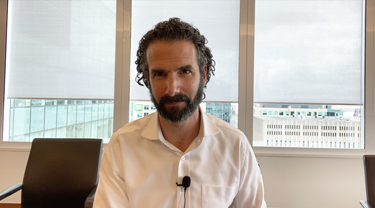At a recent speaking engagement, I was asked why businesses are so pessimistic even with global inflation broadly trending in the right direction and growth returning to certain key markets. Part of the answer lies in the sheer volume of risk events dotting the horizon, which appear to be increasing by the day. Additionally, ambiguity and the absence of full information can often disrupt sentiment more than bad news itself, and measures of geopolitical and economic policy uncertainty are now spiking.
While the global financial crisis and accompanying great recession seem like distant memories, their occurrence may have helped plant some of the seeds of recent events.
This year will see about half of the world’s inhabitants head to the polls amid an upswell in political polarization and popular discontent with the status quo. Canadian exporters, in particular, are keeping close watch of the North American election cycle, as well as voting in the large and systemically significant democracies of India and Europe.
We’ve long warned of the risk of increased bankruptcies and rising debt distress under a higher rate environment. Now, consumers, businesses and governments saddled beneath lumbering debt obligations keenly await the pivot of central bank policy posture, or risk exposing lingering financial vulnerabilities.
Other concerns also compete for our attention, from climate change and demographic shifts to the proliferation and integration of disruptive technologies. Great power competition and geoeconomic fragmentation have led to rising tensions and increased interstate war. This has reduced our capacity for international co-operation and made supply shocks a regular feature of global trade and financial flows, as we continue to manage the economic distortions left behind by the COVID-19 pandemic.
Export Development Canada’s (EDC) country risk ratings have been subject to unusual volatility over the last few years, with the trend showing a clear deterioration in our assessment of the sovereign and commercial risk landscape. Within our ratings of 145 markets, deterioration was most pronounced among weaker-rated entities, which are disadvantaged by a lower degree of resilience to shocks.
You should also check out
EDC monitors the impacts of global events on Canada and our exporters.
The share of sovereigns assessed as facing a high risk of default, according to our sovereign probability of default ratings (SPD), jumped from 15% in late 2019 to 26% in early 2024.
Our commercial country ceiling ratings, which incorporate our SPD as well as assessments of political violence, government interference, and transfer and conversion risk, tell a similar story for commercial risk. Over the same period, the share of markets deemed to present high commercial risk climbed from 8% to 19%.
Clearly, Canadian exporters are making critical trade and investment decisions in an increasingly complex global risk environment. For more insights, check out our recent Country Risk Quarterly, which published May 1.
That said, the current global environment—in which inflation (while bumpy) pulls pack and growth returns—will help address some of the financial, social, and political malaise behind this volatility. EDC’s most recent Global Economic Outlook speaks to a resilient, if somewhat lacklustre, global economy in 2024 that gives way to stronger growth heading into 2025.
At the time of writing, all-out war in the Middle East and the prospect of higher-for-longer interest rates in the United States remain a concern.
At this point, however, we don’t believe that major actors are prepared for a full-scale war in the region, and we continue to expect U.S. interest rates to come down, even if a bit later than initially anticipated. Solid growth and declining interest rates are an important elixir to the prevailing sense of pessimism that permeates today’s market mood.
The bottom line?
The world economy is expected to continue showing remarkable resilience, notwithstanding myriad risks challenging businesses today. What’s more, elevated levels of uncertainty are keeping competition on the sidelines, making it easier for those who do their due diligence and pay attention to their scenario analyses to find value.
Canadian exporters aren’t facing these challenges alone. At EDC Economics, we’re committed to delivering quality insights on global risks and opportunities to help deliver that value.
Check out our new EDC Economics hub, which brings together our latest reports, research and analysis to help you enter new markets, grow your global business, and take on risk with increased confidence.
This week, special thanks to Daniel Benatuil, senior economist on our Country & Sector Intelligence team. We’d also like to thank Janet Wilson, senior premium content manager, for her tireless efforts on EDC’s new Economics Hub.
As always, at EDC Economics, we value your feedback. If you have ideas for topics that you’d like us to explore, please email us at economics@edc.ca and we’ll do our best to cover them.
This commentary is presented for informational purposes only. It’s not intended to be a comprehensive or detailed statement on any subject and no representations or warranties, express or implied, are made as to its accuracy, timeliness or completeness. Nothing in this commentary is intended to provide financial, legal, accounting or tax advice nor should it be relied upon. EDC nor the author is liable whatsoever for any loss or damage caused by, or resulting from, any use of or any inaccuracies, errors or omissions in the information provided.







